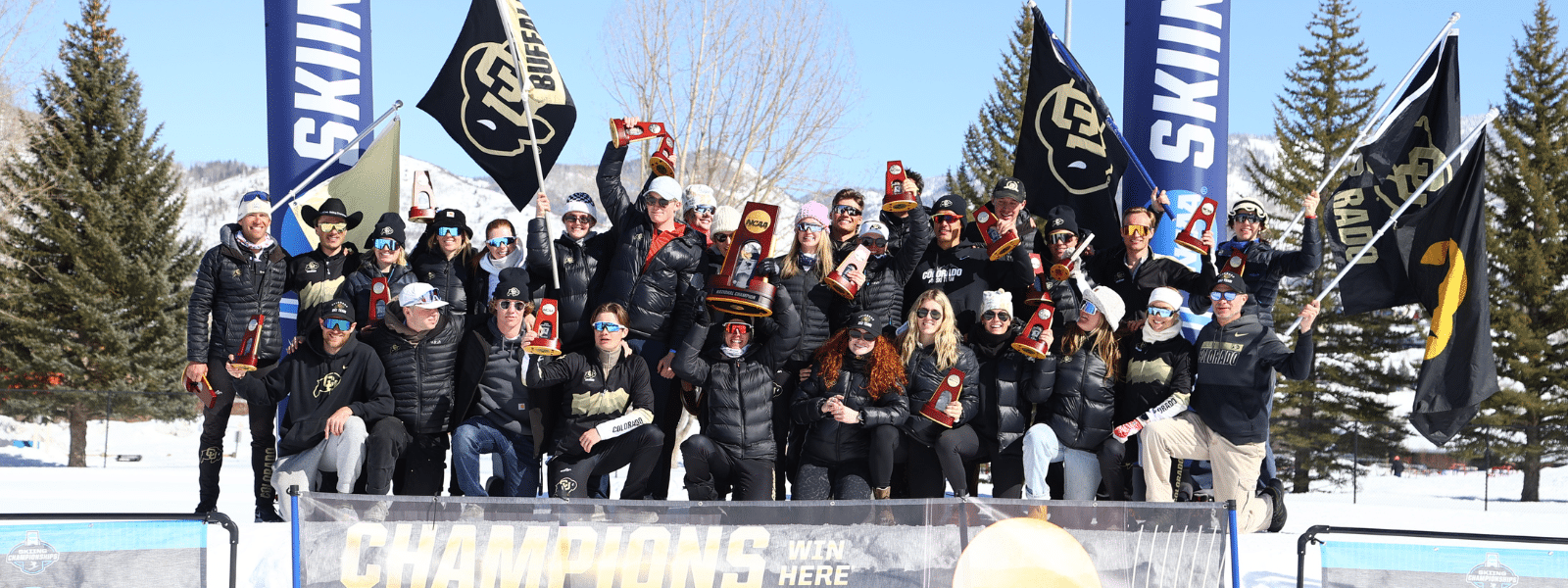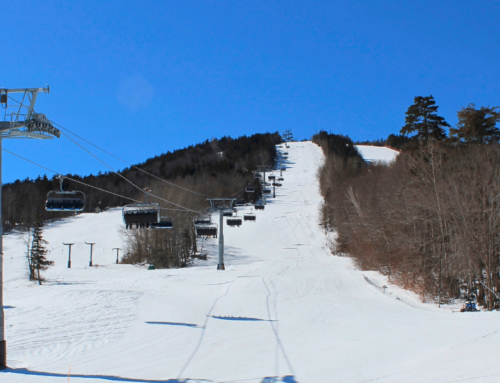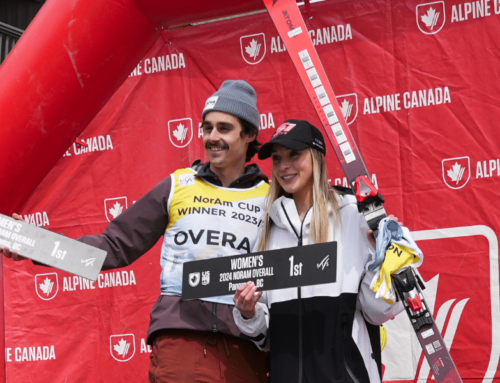Development through the ages: What went right? (Part 1)
Editor’s note: Part 1 of this two-part feature focuses on development at the regional level that brought athletes up to the national team. Part 2 focuses on what helped athletes make their jump into the major leagues.
Many factors go into each athlete’s development, especially in a sport like ski racing that has a mind-boggling array of uncontrollable elements. When they all come together, it is a minor miracle. When it comes together for multiple athletes at the same time, it creates momentum that is mighty enough to power a team forward for years with each generation self-sowing the next.

We have had those periods in U.S. Skiing, as well as excruciating droughts, where it feels like each new talent must be carefully selected and perfectly nurtured to succeed. In this article, highly decorated USST athletes recount key factors that helped them emerge nationally and make the leap to international success. Also weighing in are three of our country’s most experienced coaches, who recount what went right during eras of significant team success. Huge thanks to all the athletes and coaches for their contributions:
- Deb Armstrong Olympic Gold GS 1984.
- Kirsten Clark FIS Worlds Silver SG 2003; 1 WC win.
- Christin Cooper FIS Worlds Silver GS,SL, Bronze Comb 1982; Olympic Silver GS 1984; 5 WC wins
- Hilary Lindh WJC 1986 Gold DH; Olympic 1992 Silver DH; FIS Worlds 1996 Bronze DH, 1997 Gold DH; 3 WC wins.
- Phil Mahre Olympic Silver SL 1980, Olympic Gold SL1984 ; 27 WC wins; 3 Overall WC titles, 2 WC SL titles, 1 WC GS title 1980-83.
- Jonna Mendes WJC Silver DH 1998; Silver DH 1999; FIS Worlds Bronze SG 2003.
- Julie Parisien FIS Worlds Silver SL 1993; 3 WC wins.
- Erik Schlopy FIS Worlds Bronze GS 2003.
- Daron Rahlves FIS Worlds Gold SG 2001; Silver DH, Bronze GS, 2005; 12 WC wins.
- Marco Sullivan WJC Bronze SL 2000. 1 WC win.
- Walt Evans started his USSA career in 1983, started working in development in 1990 and spearheaded the National Development System in 2000.
- Mark Smith spent two years as an athlete on the US Ski Team and was a 4-time All American at UVM. For 30 plus years he has coached all across the country and at virtually every level, from U-14 to FIS to collegiate to private coaching to US Ski Team, regional and World Cup.
- Johno McBride has led both the US and Canadian World Cup speed teams to success and coached Bode Miller during both of his Overall World Cup winning seasons. He is now Alpine Program Director at Aspen Valley Ski and Snowboard Club.
The athlete base: where it all begins
When Walt Evans talks about good development he describes it as a triangle of athletes, coaches and facilities, starting with the athletes.
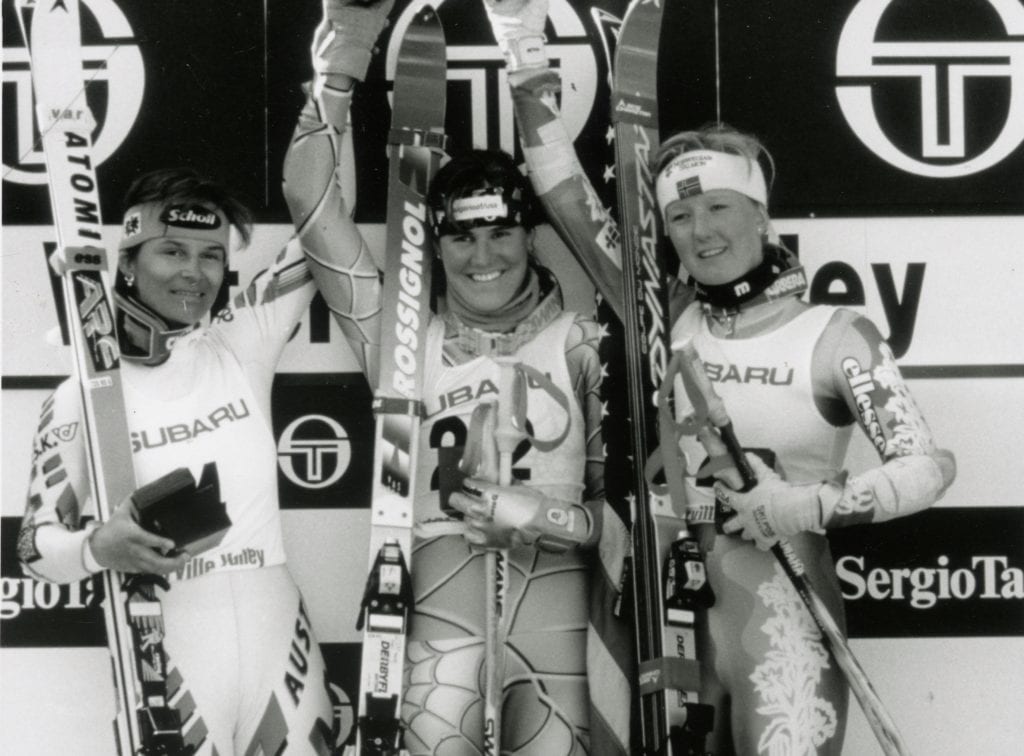
“What helped me the most as a junior skier were repetitions,” says Julie Parisien, who, along with her three siblings skied every day after school, rain (mostly) or shine at Lost Valley in Maine. “I skied the same trails at our tiny local ski area over and over and over and over. I believe it was the total accumulated time spent without any specific coaching or even time in gates that gave me the foundation to jump into competition with kids from other states.”
On the other side of the country, and in a very different venue, Marco Sullivan’s formative years at Squaw Valley involved some training but much more freeskiing “super-fast” with his coach and peer group until the closing bell. “There was some unspoken, unwritten agreement that we were going to get strong by freeskiing.”
Phil Mahre, who grew up with six siblings on the slopes of White Pass, Wash., remembers, “Early in my career it was about quantity of time on snow and training; late in my career it was about quality of time on snow and training.”
Raising the level, close to home
However they come to the sport, kids improve fastest with more kids.
“You need push and pull because pace is so important,” says Evans. “The mix includes some athletes that are a little faster, but not light years ahead.” Finding those kids means broadening the circle enough to foster competition but not so much to lose participation.
“Deb Lamarche had it right,” says Mark Smith. “Her development program of the late ’80s and early ’90s was broad-based and decentralized, letting each region organize their own projects but then bringing the best kids together nationally a few times a year.”
Smith rattles off names of athletes, from all across the country who came through in that period: Picabo Street, Julie Parisien, Megan Gerety, Tommy Moe, Jeremy Nobis, Matt Grosjean, Nate Bryan.
“Having the chance to compete against all the best girls in the northeast was incredibly helpful and made me more competitive,” says Parisien, who eventually moved on to Burke Mountain Academy and fast-tracked to the US Ski Team at age 16.
On the other end of the spectrum, Bryan first popped on radar while racing Eastern Cups as a walk-on athlete for Middlebury College. Smith, then USSA Eastern Region coach, invited Bryan to camps that summer. Bryan won the Overall Europa Cup the following season.
“We’re like three different countries,” Smith notes, “and development can’t be the same east and west. Regionally-focused development allows the freedom to adapt to what works on the ground with the benefit of national direction.”
It also engages many athletes, while helping keep costs down and maintaining the level of the local programs. Between projects — as when bringing easterners west to ski big mountains and westerners east to ski the gnarly ice — kids remain part of their home programs, and positive communication from the national level sustains consistent messaging to a broader base of athletes.
“So much is messaging, and making people feel like they are part of something,” says Smith.

Johno McBride fervently believes kids should be able to develop directly from clubs, and concurs on the importance of consistent messaging. “The group dynamic of developing a clan is really important. You need a progression, consistent language and a target you are moving for,” he said.
Facilities
Western athletes can let big mountains be their teachers and eastern athletes can make magic through repetition at smaller mountains, but at a certain point in their development ski racers need access to high level training and racing venues.
“Show the best kids the best coaches at places with good snow, challenging terrain and safety in place,” says Evans, who notes that early season training venues like Beaver Creek in the ’90s, and Copper Mountain today make a huge difference. Each region has premiere venues where the best resources are concentrated — fully-fenced slopes where surfaces are dependably rock hard, and state of the art dryland training facilities to accommodate training and testing.
“Not every club needs to be at that level but we need to manage and schedule these facilities so kids get through them in really good projects with really good coaches,” says Evans. He notes that safe, high level racing venues also make it easier to entice the top racers to race on home turf in NorAms and Nationals.
Mentors
The aspirational pull factor of larger-than-life heroes is huge, and mentors in close proximity even more so. For Christin Cooper those mentors included U.S. Ski Team women before her but also the men who were having fun while also being serious.
“I thought they were cool — like rockstars, but with no ego.” Her hometown hero Pete Patterson taught her how being a mountain person, hiking and climbing, would make her a great skier. Cooper notes that the next tier of athletes are even more important than the stars, because they’re accessible and approachable. They serve as stepping stones and also bring you back into the fold when you are struggling, and provide the balance of fun and intensity. “If a team can get that mix right, they’ve got it made,” says Cooper. (More on this in part 2)
Motivation
Teams and NGBs tend to judge their success by medals and titles, but ask top ski racers what motivated their commitment to the sport and very few will mention medals or any specific outcome. Unlike in many other sports, the pure fun and excitement of the ski racing lifestyle, over and above the rush of competition, is uniquely compelling.
“I want to be like THEM!” That’s what Cooper remembers thinking as a kid looking up to U.S. Ski Team and World Cup racers. “I want to race against Annemarie Moser-Proell, and travel in Europe, to be among the best. That’s where I want to test myself. That’s the life I want to live!”

Says Mahre, “Throughout my career, I don’t think I ever set a goal, other than, ‘Be better tomorrow than I was today.’ I set out to win every race I entered, with the understanding that was most likely not going to happen. Overall World Cups and Olympic medals were just icing on the cake.”
Clark concurs, “I was never driven by ‘being an Olympian.’ I was motivated to work hard because I needed to know I had done the work and was as prepared as I could be.”
Peers
Phil Mahre’s biggest advantage was his twin brother, Steve. “I always had to compete day in and day out in order to stay ahead of him.” Mahre also credits the ability level skiing that he grew up with in the Northwest vs strict age class skiing that would have limited his access to higher level competition.
For kids in age class skiing who don’t happen to have a World Class twin, the next best thing is a talent-loaded birth year with robust competition. Mendes ascended the ranks with a strong peer group of athletes born in 1979, many of whom made the USST in high school and stuck together through their World Cup careers.
Evans fondly recalls the pinnacle in the National Development System, when the 1984 birth year rolled through. Among them were Ligety, Vonn and Mancuso, followed by 1985 babies Nyman, Stiegler and Jitloff. Together with some other talented youngsters they racked up a veritable trove of World Junior medals from 2002 to 2005.

Sullivan, too, benefitted from a strong peer group at his home mountain during his early teens. “When we hit FIS age it was natural to be fast,” he said. “It never felt like there was a ton of pressure. We came in with what we had and that was good enough.”
The right coach at the right time
At the grassroots level, athletes recall that their best coaches were the ones that kept it fun. As athletes mature, their best coaches are those that offer perspective and instill confidence.
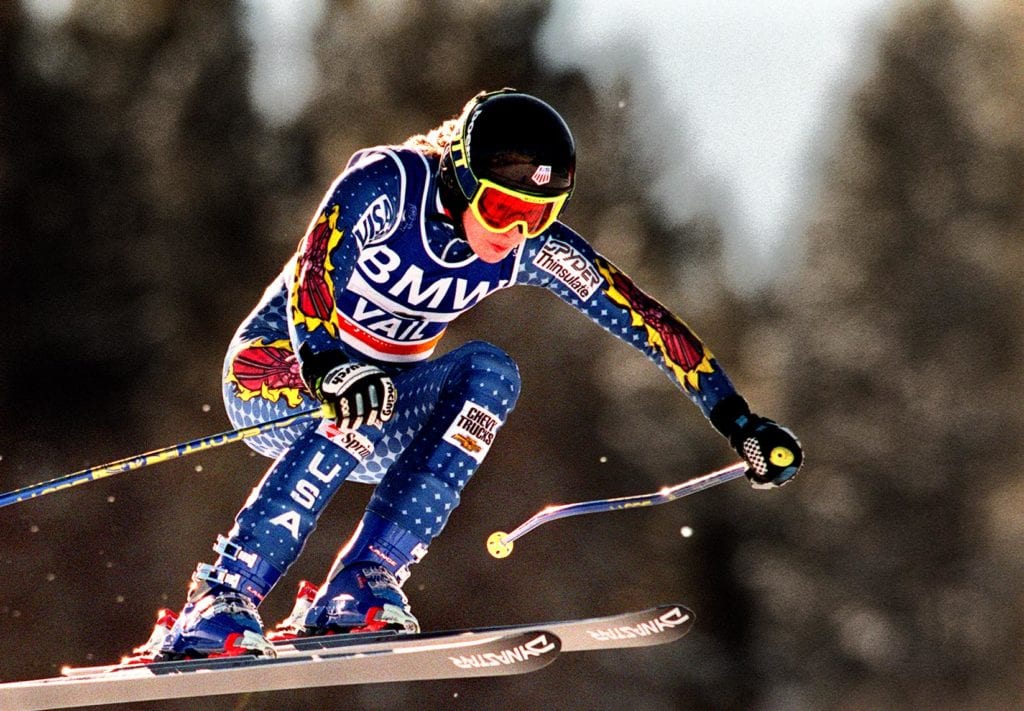
Kirsten Clark recalls being very intimidated her first years on the U.S. Ski Team. During that time she relied on the confidence instilled by her CVA home coach Mike Savage. The touchstone of a trusted coach is especially important as athletes transition to higher levels. “The mental aspect was the biggest part. I needed to believe,” says Clark.
Mahre agrees, “It doesn’t get easier as you move up the ranks, but if you have the attitude that you can compete with the best, you’ll never settle for being second. So much of our sport is mental.”
Coaches play a critical role in either building or eroding that confidence.
When Cooper was first on the U.S. Ski Team, racing full-time on the World Cup Tour at age 17, she felt like she got torn apart on the road. She returned to Sun Valley where her coach Michel Rudigoz would fold her back into the comfort of her home program and rebuild her. Later as her coach on the US Ski Team, Rudigoz was known for masterfully reading his athletes (the 1982 women’s team is the only American team, men or women, to win the Nations Cup), knowing when to push them harder, when they needed a break from each other and when to send them away for a weekend of relaxation.

Mendes recalls a similar connection that Georg Capaul had with her younger group of C Team athletes. “He understood how young we were, and took us go-karting, or yodeling or to his friend’s restaurant in the Alps. He made sure it was fun.”
The feeling that there is more to life than sport, and that athletes are people first, builds a powerful bond. Mahre calls his coach Harald Schoenhaar “tough but tender. When we arrived at a camp, he always asked about my family before asking about my training,” says Mahre.
Sullivan recalls the healthy team environment created by all his coaches in the early 2000s: “Johno (McBride) really led the charge with his approach of working hard, paying attention to all the details and having fun doing it, but it wouldn’t have happened without the other coaches.”
Funding and community
As Lindh explains for her generation of ski racers (and all those before her from roughly the early 70s on), “Everything was paid for from age 14 on — everything!” It is impossible to estimate how much talent has been driven out of the sport over the years from the escalating cost of the sport and lack of funding.

In the glory days of U.S. development, costs were shared, managed and mitigated at every step. Equipment companies, community and the national team massively defrayed or eliminated costs for promising athletes. Even when there are significant costs for training opportunities, there are ways to manage them. Mendes recalls that her coach, Noel Dufty, carefully assessed each development project, participating only in the ones that offered more than she could get at home. Furthermore, Dufty and longtime Squaw coach Mark Sullivan banded together and used the resources of both clubs to create better training opportunities for their athletes and keep it fun.
Ideally that type of hospitality, which produced fluidity amongst athletes and coaches, could be replicated from the division to the region, and then to the entire country.
“Development should not be a financial hindrance,” says McBride, whose team approach extends to the entire skiing community. “It’s really important for clubs to start thinking bigger picture, and more about how can we develop kids from the U.S. When that comes together I think we’re going to get back to having great teams.”
Editor’s note: Stay tuned for Part 2, where athletes and coaches talk about key factors in making the jump to international success. This story is part of our ongoing series on alpine development in North America. Have some thoughts on this? Send a letter to the editor. If it’s good, we’ll publish it.
